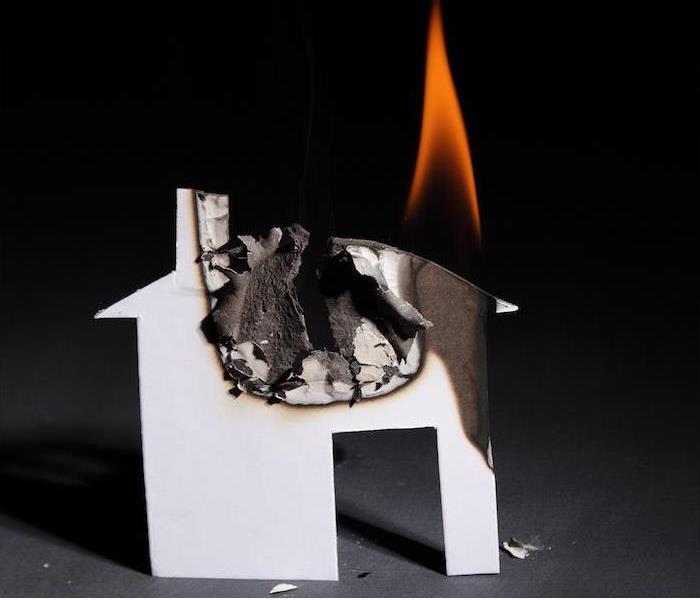The Fire Tetrahedron (or How to Stop a Fire 4 Different Ways) | SERVPRO® of Gwinnett County South
1/25/2022 (Permalink)
 If your home or business has any damage, SERVPRO of Gwinnett County South is ready around the clock to help you recover.
If your home or business has any damage, SERVPRO of Gwinnett County South is ready around the clock to help you recover.
Don’t call it a pyramid, and don’t mistake it for a prism. A tetrahedron is all triangles—four of them, in fact, connected three-dimensionally, as opposed to a pyramid, which has a square base and five sides, or a prism, which has two triangular ends with three rectangular sides connecting them.
Got all that? Good. Let’s get into today’s geometry…er, fire safety lesson.
The geometry comes into play here: The fire tetrahedron represents the four equal components of a fire, each depending on the other for a fire’s outset and survival.
They work in sync and in cycle to make a fire start and keep it alive, and they offer important insight into how we make living fires stop. Let’s look at each side and how it plays into fire management.
Fuel. Fire has to burn something, right? That something is what we call the fire’s fuel source. Whether it’s a grove of trees in a wildfire or the grease in your frying pan, something has to be available for a fire to consume.
Heat. The material that becomes the fuel source also has to reach a certain level of heat before it can burst into flame. The specific degree marker varies, but every material has its flash point.
Oxygen. That oxygen we all breathe is essential for our survival, and the same goes for fire. Fires can’t start in a vacuum—they require a steady, available influx of oxygen to get going and stay alive.
Chemical Chain Reaction. The previous three components all react together, repeatedly, in a chain reaction that self-perpetuates until one of the elements is removed, depleted or disrupted.
And that only happens in one of the following ways.
Cool it. Fire is hot, so this is naturally the first reaction to a fire. It’s also an effective one. Restoring the thermal balance to the fire’s fuel—for example, cooling the wood frame of a house fire with water from a firehose until the rate of cooling overtakes the rate of heating—brings a fire to a quick halt.
Smother it. When you stamp out a fire, or even when you snuff out a cigarette, this is the reason it works. Cutting off a fire’s oxygen supply by smothering it stops the fire’s ability to consume what it needs to stay alive.
Starve it. If the other three components are in place, a fire would burn forever, provided it always had fuel. So one of the ways to end a fire is to either remove that fuel from its path or create a situation in which it burns all the available fuel and has nowhere left to go.
Interrupt the chain reaction. The science here is a little advanced, but the gist is that certain chemicals and gases can disrupt the cycle that must be present for fire to survive. Halon was thought to be the be-all-end-all solution of this kind until its adverse impact on the environment was discovered.
If the fire tetrahedron makes a wreck of your home or business, we’re ready around the clock to help you recover. Contact SERVPRO anytime for fast, thorough cleanup and recovery after a fire.



 24/7 Emergency Service
24/7 Emergency Service